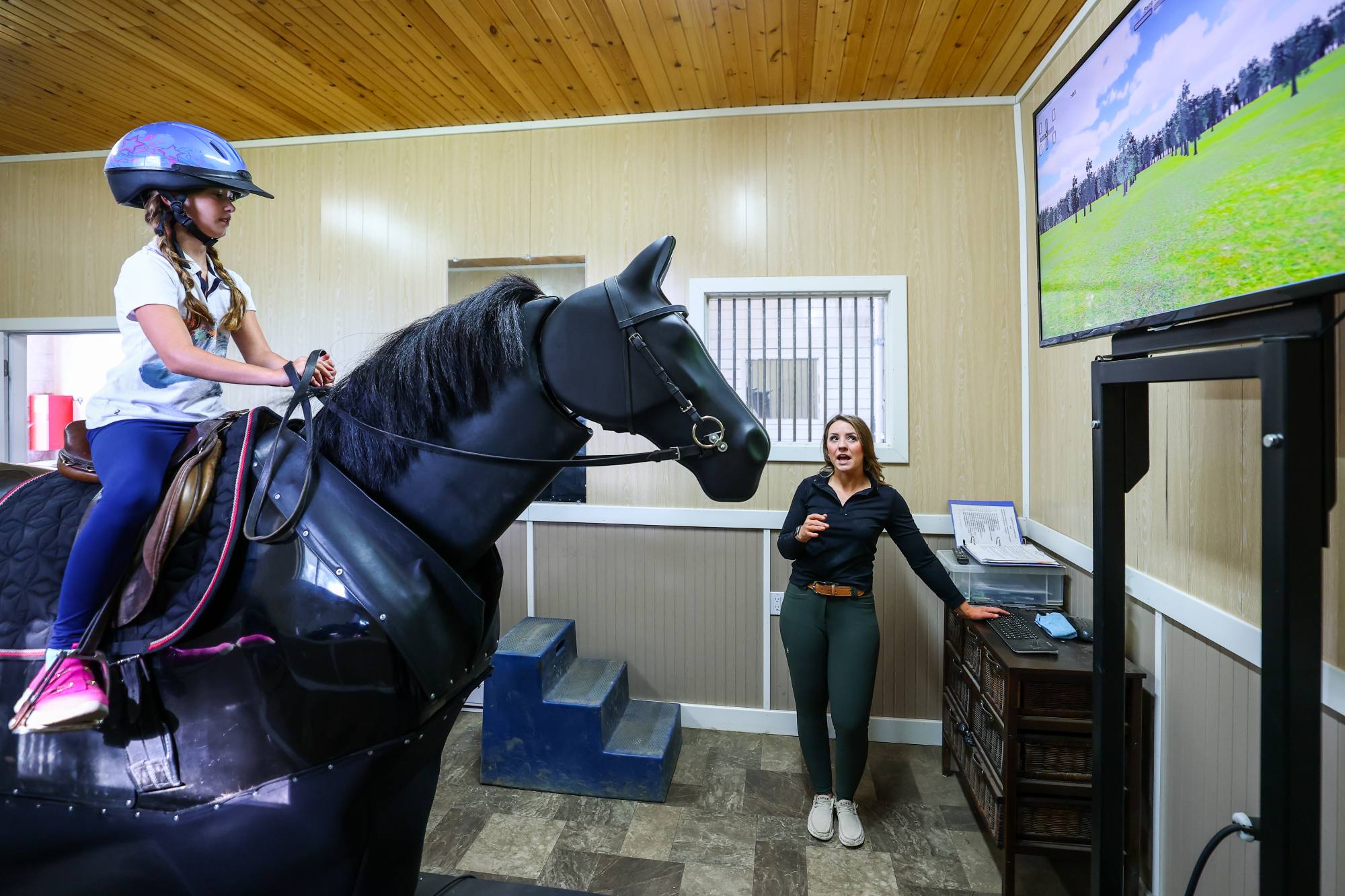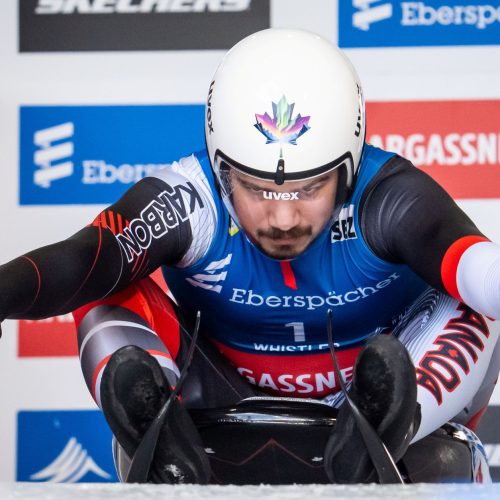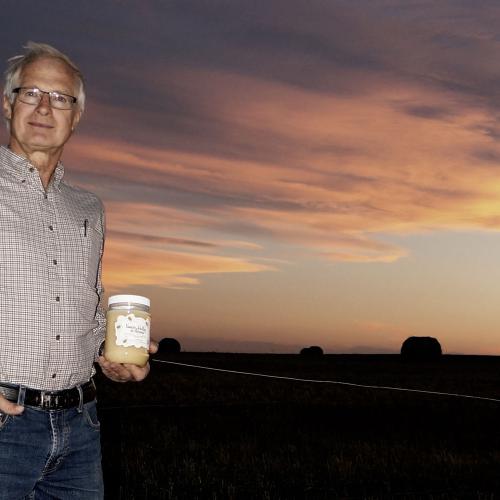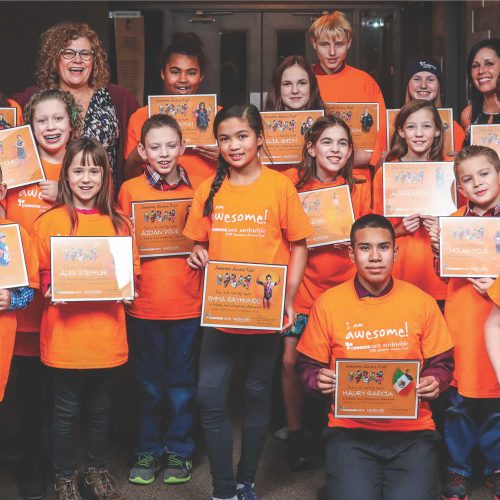For more than 5,000 years, horseback riding has connected humans with horses through tradition, instinct and skill.
From Western trail riding to the precision of dressage and the thrill of show jumping, equestrianism has largely remained a timeless practice. But, just northwest of Airdrie, one local equestrian centre is blending that tradition with cutting-edge technology — bringing horse riding firmly into the 21st century.
At the Canadiana Equestrian Centre, innovation meets the saddle in the form of two high-tech, full-sized horse simulators. Designed in Europe and installed at the centre a decade ago, these state-of-the-art machines replicate the movements of real horses and offer riders a unique opportunity to refine their skills — without saddling up an animal.
“It allows you to work on yourself and see what you need to improve upon, without worrying about what the animal is doing,” explains Nancy Munro, who founded the centre 26 years ago and has been boarding horses for more than 35.
The simulators — one designed for dressage and the other for jumping — are equipped with sensors that provide immediate feedback on the rider’s balance, aids and technique. The result is a training environment that is both safe and highly effective for riders of all skill levels.
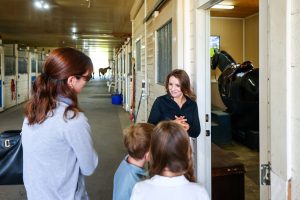
Above Nikala Ward explains the simulator to writer Stacie Gaetz and her children.
“For beginners, it’s an ideal way to learn to steer, stop and gain confidence before ever getting on a real horse,” says Munro. “It removes the fear factor, while building a strong foundation.”
For experienced riders, the benefits are just as clear. Nikala Ward, an Equine Canada-certified hunter/jumper coach at Canadiana, uses the simulators to assess riders during evaluations and lessons.
“Over time, we all develop habits we don’t notice, maybe shifting our weight or using our hands too much,” Ward says. “The simulators provide clear, instant feedback so we can correct those habits quickly.”
Amanda Lindgren, an Equine Canada-licensed coach who has more than 20 years of experience, says her students have shown faster progress using the simulator than through traditional training alone.
“The sensors often reveal issues that would normally take a few lessons to identify,” she says. “We can get straight to work on correcting posture and form.”
Beyond skill building, the simulators have proven invaluable for riders recovering from injuries or surgeries. They offer a controlled and gentle way to ease back into the saddle, especially during Alberta’s frigid winters.
“In -40°C weather, you don’t want to take a horse out,” says Munro. “With the simulators, you can still ride, train and stay sharp.”
The benefits extend beyond the rider. Simulators help reduce strain on real horses, particularly from new riders who may pull reins too tightly or grip too hard. It’s a more thoughtful, animal-friendly approach to learning.
“This sets the rider and horse up for success by laying the groundwork beforehand,” Munro says. “When the boots finally hit the stirrup, both are more prepared.”
Canadiana’s tech-forward approach reflects a growing trend in the equestrian world. Around the globe, stables are incorporating smart technologies including automated feeding systems, climate control, wearable tech for horses and riders, and live-feed barn cameras. It’s a quiet revolution that’s modernizing the barn, without compromising the heart of horsemanship.
As with almost every field, technology is changing how some things are done, but the Canadiana Equestrian Centre remains committed to tradition while ushering in a new era of innovation.
“Horsemanship will always be an art,” says Munro. “But, with the right tools, we can preserve the beauty of that tradition while making it smarter, safer and more accessible for everyone.”
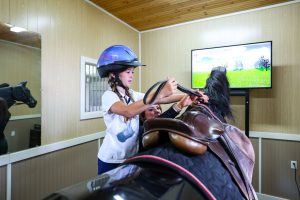
In the Saddle
Ten-year-old Avianna Gaetz has three years dressage experience at another stable. She was excited to visit Canadiana Equestrian Centre on July 13 to see how the horse simulators differ from a real horse.
“The simulator was more controlled and would move without default,” she says.
“On a real horse, it takes more time to get into the groove, but the simulator replicates the same movements of a horse. You still have to keep your posture and movements the same as a real horse so you can see what you are doing with your heels and body position and change it if you need to.”
Gaetz adds that the simulator allows the trainer to assist with foot position and stability right away, rather than the rider having to finish their ride before the coach can help.
Gaetz’s eight-year-old brother, Pearson, has attended many of his sister’s lessons, but has been too apprehensive to try riding. The simulator allowed him to get an idea of the “feel” of riding a horse, without worrying about the unpredictability of an animal.
“I’ve never ridden a horse because I am afraid of heights and getting kicked off,” he says.
“I liked being on the simulator and feeling it go up and down like a real horse would. I think if I got more comfortable on the fake one, I might be ready to ride a real on one day.”


